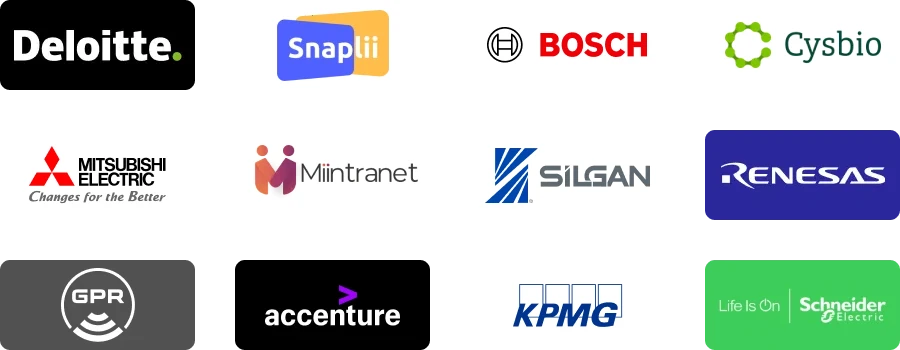| REPORT ATTRIBUTE |
DETAILS |
| Historical Period |
2019-2022 |
| Base Year |
2023 |
| Forecast Period |
2024-2032 |
| Japan Multihead Weighers Market Size 2023 |
USD 13.9 million |
| Japan Multihead Weighers Market, CAGR |
6.89% |
| Japan Multihead Weighers Market Size 2032 |
USD 25.32 million |
Market Overview
The Japan Multihead Weighers Market is projected to witness substantial growth, with its value expected to surge from USD 13.9 million in 2023 to USD 25.32 million by 2032, reflecting a robust CAGR of 6.89%. The Japan Multihead Weighers Market stands as a pivotal segment within the nation’s industrial landscape, underscored by advanced technology, evolving consumer demands, and a competitive business environment. Multihead weighers have emerged as indispensable tools across various sectors, including food processing, pharmaceuticals, and cosmetics, owing to their precision and efficiency in weighing diverse products. This widespread adoption has been instrumental in propelling the market’s growth trajectory in Japan. Market dynamics are influenced by several factors, including technological advancements, changing consumer preferences, regulatory standards, and industry competition. The growing emphasis on automation and efficiency in manufacturing processes has driven the steady rise in demand for multihead weighers. Manufacturers continually innovate to enhance the accuracy, speed, and versatility of these systems to meet the evolving requirements of end-users.
A primary driver fueling market growth is the increasing adoption of automated packaging solutions across various industries. Multihead weighers offer advantages such as improved productivity, reduced labor costs, and enhanced product quality, thereby driving their adoption among manufacturers. Additionally, the expanding food and beverage industry in Japan, coupled with rising demand for packaged and convenience foods, has further bolstered the need for multihead weighers. These machines enable efficient weighing and packaging of a wide range of food products, meeting the evolving preferences of consumers while ensuring compliance with stringent food safety and packaging standards.
Despite favorable market conditions, challenges such as high initial investment requirements and complexities associated with integration into existing production lines pose hurdles for market players. Addressing these challenges necessitates concerted efforts to provide comprehensive training and support services to end-users. However, the market is witnessing notable trends, including the integration of advanced technologies like artificial intelligence and machine learning into multihead weighing systems, enhancing performance and efficiency. Additionally, there is a growing demand for features such as touchscreen interfaces and compatibility with Industry 4.0 standards, which improve operational efficiency and flexibility.
Looking ahead, the Japan Multihead Weighers Market is poised for significant growth, driven by ongoing technological innovations, increasing automation in manufacturing, and rising demand from end-user industries. Continued investments in research and development to introduce advanced features and functionalities in multihead weighing systems are expected. Collaborations and strategic partnerships between stakeholders are anticipated to facilitate market expansion and drive innovation in product development and service offerings. Overall, the Japan Multihead Weighers Market presents lucrative opportunities for stakeholders to capitalize on the growing demand for efficient weighing solutions and address the evolving needs of the industrial sector.
Access crucial information at unmatched prices!
Request your sample report today & start making informed decisions powered by Credence Research Inc.!
Download Sample
Segmentation Analysis
By Number of Heads:
The segmentation based on the number of heads categorizes multihead weighers into four groups: up to 10 heads, 11 heads to 15 heads, 16 heads to 20 heads, and more than 20 heads. This classification allows manufacturers to cater to the varying production requirements of different industries, offering flexibility and scalability in weighing solutions.
By Machine Type:
Segmenting by machine type distinguishes between rotary machines and linear machines. Rotary machines are characterized by their circular motion, ideal for high-speed applications, while linear machines operate in a straight line, offering precise weighing and filling capabilities. Understanding the distinct advantages of each machine type enables manufacturers to meet the specific needs of diverse end-users effectively.
By Maximum Weight Measurement:
Categorizing multihead weighers based on maximum weight measurement facilitates the selection of the most suitable equipment for various applications. Segments include up to 1000 grams, 1001 grams to 2500 grams, 2501 grams to 5000 grams, and more than 5000 grams, catering to the diverse needs of industries such as food, pharmaceuticals, and chemicals.
By End Use:
Segmentation by end use provides insights into the specific industries and applications driving demand for multihead weighers. Key segments include food, chemical, pharmaceutical, and homecare & cosmetics. Within the food segment, further subdivisions such as snacks food, meat, poultry, and frozen food, ready-to-eat meals, fresh produce & salads, dairy products, bakery & confectionary, cereals & grains, and pet food offer a comprehensive understanding of the market landscape.
Segments:
By Machine Type
- Rotary Machine
- Linear Machine
By Technology
- Gravity Technology
- Centrifugal Technology
- Vibration Technology
- Others
By Number of Heads
- Upto 10 Heads
- 10 Heads to 15 Heads
- 15 Heads to 20 Heads
- More than 20 Heads
By End Use
- Food
- Chemical
- Pharmaceutical
- Laboratory
- Others
Market Drivers
Rise of Automation in Food Processing:
Similar to other markets, Japan’s food processing industry is undergoing a significant transformation with the rise of automation solutions. Multihead weighers have emerged as a critical component in this transition, offering unparalleled speed, accuracy, and consistency in portioning and packaging. By automating these tasks, manufacturers can achieve greater efficiency and significant reductions in labor costs, driving the adoption of multihead weighers across the sector.
Demand for High-Quality and Precise Packaging:
Japanese consumers are renowned for their discerning tastes and high expectations for quality and precision. For instance, Japanese shoppers have become more price-conscious amid declining consumer confidence, which birthed many inexpensive parity products in the formerly luxury-centric market. In this context, multihead weighers play a crucial role in ensuring consistent and accurate weight measurements, thereby minimizing product giveaway and maximizing profitability for manufacturers. For example, multihead weighers allow manufacturers in the chemical & pharmaceutical industry to enhance their productivity, and they also increase profitability through the elimination of manual errors and wastage. By delivering precise packaging solutions, multihead weighers align perfectly with the Japanese market’s emphasis on quality and reliability.
Growing Popularity of Convenience Foods:
The Japanese market has witnessed a growing trend towards convenience foods, including pre-packaged salads, fruits, and snacks. Multihead weighers are ideally suited for handling delicate items and ensuring consistent portion sizes in these products. As consumers increasingly prioritize convenience in their busy lifestyles, the demand for efficient and accurate packaging solutions like multihead weighers continues to rise.
Focus on Food Safety and Hygiene:
Japan has stringent food safety regulations, necessitating the highest standards of hygiene and accuracy in food processing. For instance, the country’s food safety is governed by the “Food Safety Basic Act” under the jurisdiction of the Cabinet Office. Multihead weighers play a crucial role in helping manufacturers comply with these regulations by ensuring accurate portion control and minimizing the risk of contamination. Features such as easy cleaning and hygienic design further enhance their suitability for the Japanese market’s stringent requirements. For example, multihead weighers manufactured using food-grade materials and easily cleanable surfaces prioritize hygiene, making them highly desirable. They can be set up to precisely weigh different product types and container sizes, making them ideally equipped to handle the diversity of products in the Japanese food industry.
Market Trends
Advanced Automation Integration:
Japanese manufacturers are at the forefront of integrating advanced automation systems with multihead weighers to revolutionize their production processes. This integration goes beyond mere automation of weighing tasks; it encompasses the seamless incorporation of robotic arm systems for efficient product handling, real-time data collection, and analysis capabilities, as well as establishing robust communication channels with other equipment along the production line. By integrating multihead weighers with sophisticated automation systems, manufacturers in Japan are achieving unprecedented levels of efficiency, productivity, and operational excellence.
Focus on Compact and Hygienic Design:
In the realm of manufacturing, space optimization is paramount, particularly in the context of Japan’s often-constrained factory floor spaces. Consequently, Japanese manufacturers are placing a significant emphasis on developing compact multihead weighers with minimal footprints to maximize the utilization of available space. Moreover, there’s a notable trend towards enhancing hygienic design features in these machines. This includes the incorporation of self-draining hoppers, facilitating easy disassembly for thorough cleaning, and integrating antimicrobial surfaces to ensure uncompromised food safety standards. By prioritizing compactness and hygiene, manufacturers are not only enhancing operational efficiency but also upholding the highest standards of product safety and quality.
Smart Weigher Technologies:
The adoption of smart technologies within multihead weighers is rapidly gaining momentum in the Japanese market. These intelligent systems leverage a myriad of cutting-edge technologies such as sensors and artificial intelligence (AI) to augment their functionality. With predictive maintenance capabilities, multihead weighers can preemptively identify potential issues, minimizing downtime and ensuring uninterrupted operations. Furthermore, self-learning algorithms enable these machines to autonomously adjust settings based on product characteristics, optimizing accuracy and efficiency. Real-time monitoring and feedback mechanisms provide invaluable insights into production processes, facilitating enhanced process control and reducing product giveaway, thereby maximizing yield and profitability.
Water-Resistant Construction:
Given Japan’s climatic conditions characterized by high humidity levels, manufacturers are increasingly focusing on developing multihead weighers with robust water-resistant features. These specialized constructions safeguard sensitive components from moisture-induced damage, ensuring the longevity and reliability of the equipment even in challenging environmental conditions. By investing in water-resistant multihead weighers, manufacturers can mitigate the risks associated with humidity-related malfunctions, thereby enhancing operational stability and minimizing downtime.
Focus on Sustainability:
Sustainability has emerged as a central tenet of manufacturing practices in Japan, prompting manufacturers to prioritize eco-friendly solutions in their operations. In the context of multihead weighers, this translates into a concerted effort to minimize waste generation throughout the production process. Manufacturers are exploring innovative approaches to handle recycled packaging materials efficiently and optimize portion control to minimize product giveaway. By embracing sustainable practices, manufacturers not only reduce their environmental footprint but also align with consumer preferences for ethically responsible products, fostering goodwill and brand loyalty.
Market Restraints and Challenges
High Initial Investment:
Multihead weighers, particularly advanced models with high-speed capabilities and smart features, entail substantial initial investment costs. For smaller Japanese food processing businesses operating within constrained budgets, this upfront expense can present a significant barrier to adoption. The capital-intensive nature of acquiring multihead weighers may deter these businesses from embracing automation, thereby limiting their ability to optimize production efficiency and competitiveness in the market. To address this challenge, manufacturers could explore options such as offering leasing or financing arrangements, allowing businesses to spread the cost of investment over time and make multihead weighers more financially accessible.
Ongoing Maintenance Costs:
In addition to the initial investment, ongoing maintenance is essential for ensuring the optimal performance and longevity of multihead weighers. However, these maintenance costs can accumulate over time and must be factored into the overall investment equation. Neglecting regular maintenance can lead to equipment downtime, reduced productivity, and increased risk of malfunction, ultimately undermining the anticipated benefits of automation. Thus, businesses must allocate sufficient resources for routine maintenance and servicing to maximize the return on their investment in multihead weighers.
Limited Factory Floor Space:
Many Japanese food processing facilities, particularly those situated in urban areas, face challenges associated with limited floor space. The installation of larger, industrial-grade multihead weighers may prove impractical in such environments, where space optimization is paramount. Manufacturers must innovate to develop more compact models that can effectively meet the weighing and packaging needs of businesses operating within confined spaces without compromising on performance or functionality. By addressing the issue of space constraints, manufacturers can broaden the applicability of multihead weighers across a wider spectrum of businesses.
Skilled Labor Requirements:
While multihead weighers are designed to streamline operations and enhance efficiency, their effective operation and maintenance may require a certain level of technical expertise. However, finding skilled labor in Japan’s shrinking workforce poses a significant challenge for businesses seeking to fully leverage the benefits of automation. Bridging the skills gap and ensuring access to adequately trained personnel are crucial steps in maximizing the potential of multihead weighers within the Japanese food processing industry.
Competition from Labor-Intensive Practices:
Japan’s strong tradition of craftsmanship and meticulous quality control in industries such as food processing presents another obstacle to the widespread adoption of automation. Some manufacturers may exhibit reluctance to fully embrace automation, particularly for handling high-value or delicate food products, due to concerns about compromising quality or losing the human touch. Overcoming this resistance requires effective communication and education to demonstrate the value proposition of multihead weighers in terms of enhancing efficiency, consistency, and overall productivity.
Key Players
- Sensograph Packaging Technology
- Anhui UUPAC Intelligent Equipment Co., Ltd.
- Hastamat Verpackungstechnik GmbH + Co. KG
- Guangdong Kenwei Intellectualized Machinery Co., Ltd.
- Satyam Micro System
- Emrich Packaging Macinery Pty.Ltd
- Bull DOG Food Machinery
- ISHIDA CO., LTD.
- YAMATO-Scale GmbH Germany
- Marel Food Systems
- nVenia LLC.
- IMA-Ilapak
- Scanvaegt Systems A/S
- Dm Packaging Group S.r.l
- Comek S.r.l.
- MULTIPOND Wägetechnik GmbH
- PFM S.P.A.
- Grupo Exaktapack S.L.
- Multiweigh GmbH
- IRTA Group
Recent Developments
In April 2022, YAMATO-Scale GmbH Germany introduced the STATS line monitor, an innovative solution designed to record production information and capture data for multihead weighers. This powerful tool offers enhanced capabilities for monitoring and analyzing production processes, providing valuable insights to optimize operational efficiency and quality control measures.
In March 2022, MULTIPOND Wagetechnik GmbH launched fully automatic multihead weighers specifically tailored for processing mussels. These advanced weighers are engineered to significantly reduce labor costs by automating the weighing and filling process. With the introduction of these state-of-the-art multihead weighers, manufacturers can now achieve impressive throughput rates, filling up to 100 cans per minute with precision and consistency. This advancement represents a significant milestone in streamlining production processes and enhancing productivity in the food processing industry.
Regional Analysis
Kanto
The Kanto region, encompassing the Greater Tokyo Area and surrounding prefectures such as Chiba, Saitama, and Kanagawa, holds the largest market share of approximately 35% in Japan’s multihead weighers market. This region’s status as the country’s economic and industrial powerhouse has significantly contributed to the high demand for multihead weighers.
Tokyo, the capital city and a global financial center, is home to numerous food and beverage companies, as well as large-scale distribution and logistics operations, which heavily rely on multihead weighers for efficient packaging and handling of products. The region’s well-developed infrastructure and transportation network have facilitated the smooth distribution of goods, further driving the need for accurate and high-speed weighing solutions provided by multihead weighers.
Chubu
The Chubu region, comprising major prefectures like Aichi, Shizuoka, and Gifu, accounts for approximately 23% of Japan’s multihead weighers market share. This region’s strong manufacturing base, particularly in the automotive, aerospace, and food processing industries, has been a key driver of multihead weigher demand. Aichi Prefecture, home to the city of Nagoya and the headquarters of several major automakers, including Toyota, Honda, and Mitsubishi, requires precise weighing and packaging solutions for automotive components and assemblies.
Kansai
The Kansai region, encompassing prefectures like Osaka, Kyoto, and Hyogo, holds a market share of approximately 18% in Japan’s multihead weighers market. This region’s diverse industrial landscape and the presence of major logistics hubs have contributed significantly to the demand for multihead weighers. Osaka, a major commercial and industrial center, is home to various manufacturing and distribution operations that require efficient weighing and packaging solutions. Multihead weighers are essential for ensuring accurate weights and minimizing product waste in industries such as food and beverage, pharmaceuticals, and consumer goods. Kyushu
The Kyushu region, comprising prefectures like Fukuoka, Oita, and Kagoshima, accounts for a market share of approximately 12% in Japan’s multihead weighers market. This region’s diverse industrial activities, including food processing, semiconductors, and heavy machinery, have contributed to the demand for multihead weighers.
Fukuoka Prefecture, a major center for food and beverage production, relies heavily on multihead weighers for accurate portion control and packaging of products. The region’s semiconductor industry also utilizes multihead weighers to ensure precise weighing and distribution of raw materials and finished products.
Tohoku and Hokkaido
The Tohoku and Hokkaido regions, encompassing northern prefectures like Miyagi, Aomori, and Hokkaido, hold a combined market share of approximately 12% in Japan’s multihead weighers market. While not major industrial hubs, these regions’ economic activities, including agriculture, food processing, and seafood industries, have driven the demand for multihead weighers. Miyagi Prefecture and Hokkaido are home to various food and beverage companies that rely on multihead weighers for accurate weighing and packaging of their products. The regions’ fishing and seafood processing industries also contribute to the demand for multihead weighers, ensuring precise portion control and minimizing waste.
Shape Your Report to Specific Countries or Regions & Enjoy 30% Off!
Future Outlook
- The Japan Multihead Weighers Market is poised for robust growth driven by increasing automation in food processing and packaging industries.
- Technological advancements, such as smart weigher technologies and integration with automation systems, will continue to drive innovation in the market.
- Compact and hygienic design features will gain prominence to address space constraints and ensure food safety standards.
- Sustainability concerns will shape product development, with a focus on minimizing waste and optimizing resource utilization.
- Government initiatives to incentivize automation and modernization in manufacturing processes will further accelerate market growth.
- Rising demand for convenience foods and packaged products will fuel the adoption of multihead weighers across diverse applications.
- Manufacturers will prioritize the development of versatile and customizable solutions to meet evolving customer requirements.
- Collaboration between equipment manufacturers and technology providers will drive advancements in multihead weighing systems.
- Continuous investment in research and development will lead to the introduction of innovative features and functionalities in multihead weighers.
- Enhanced data analytics capabilities will enable manufacturers to optimize production processes, improve efficiency, and maintain high-quality standards.







